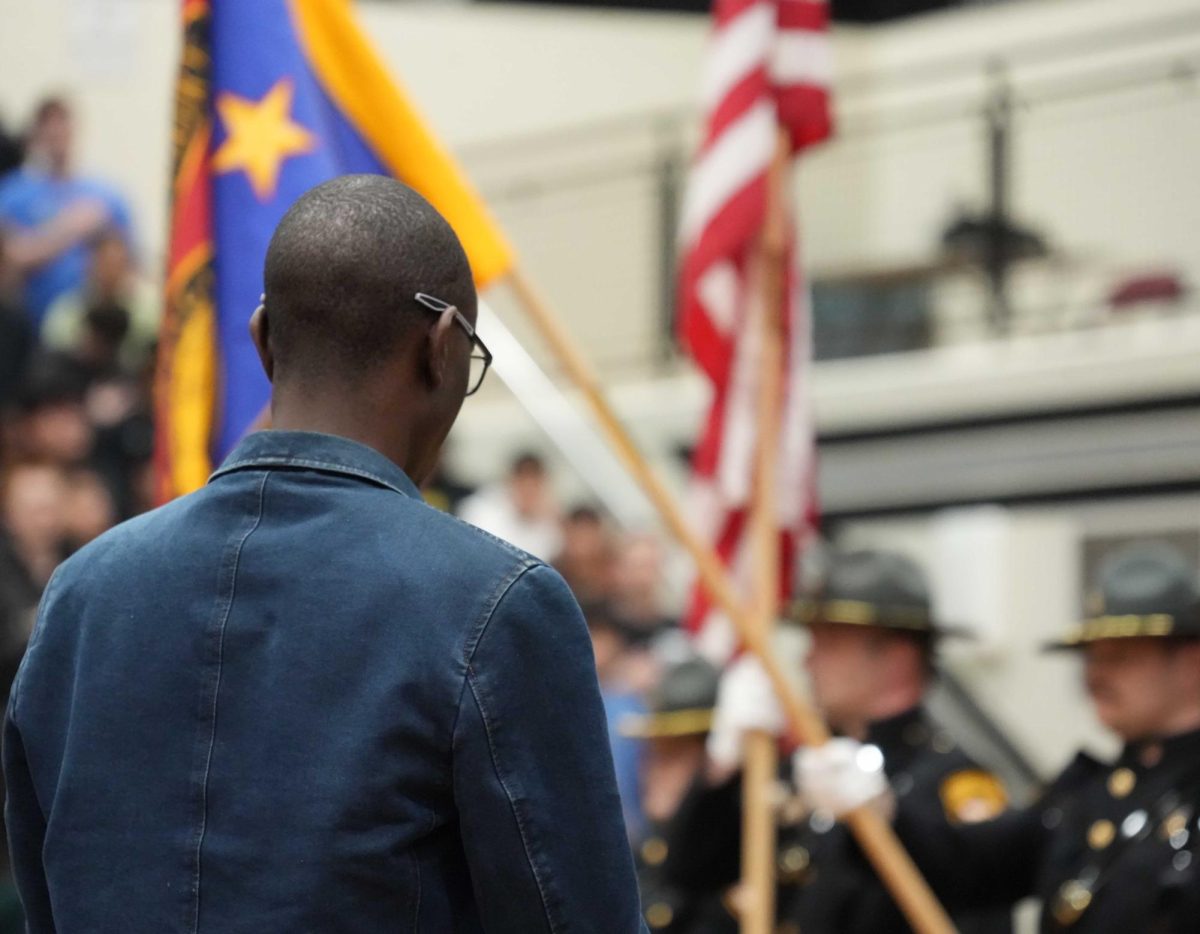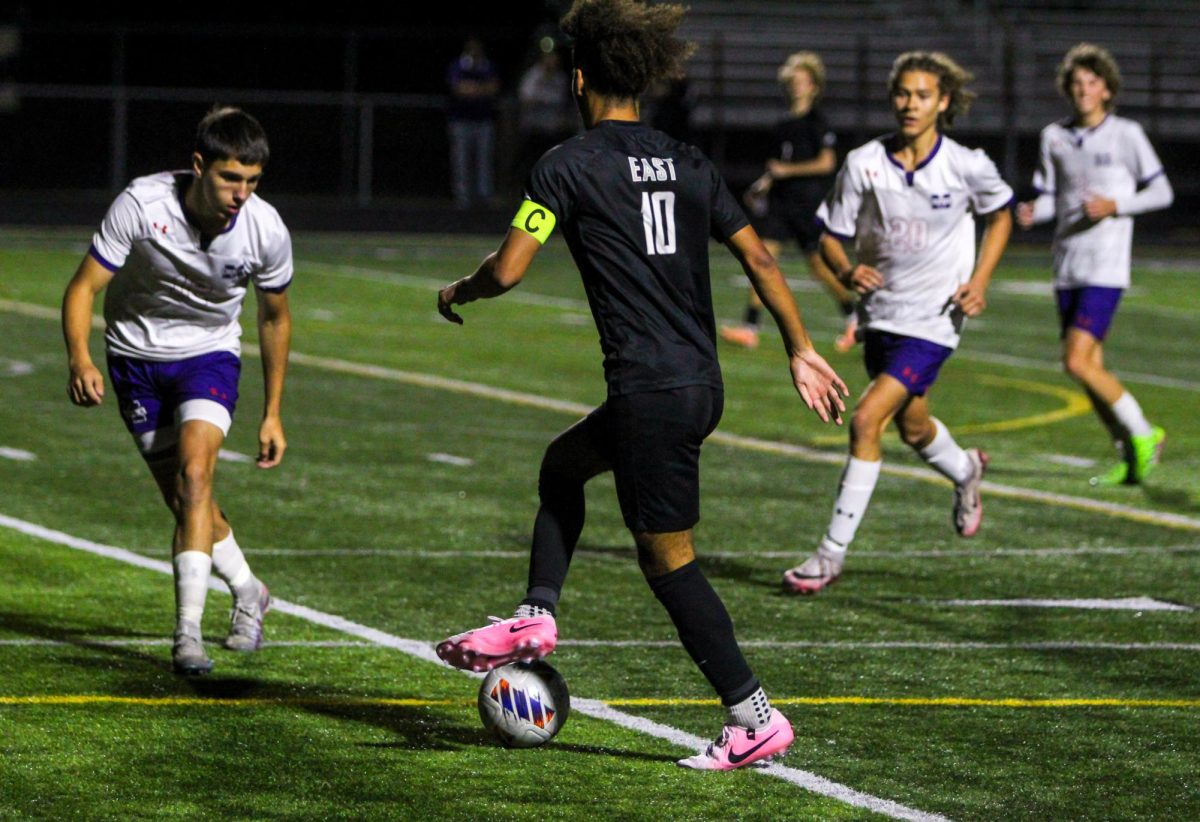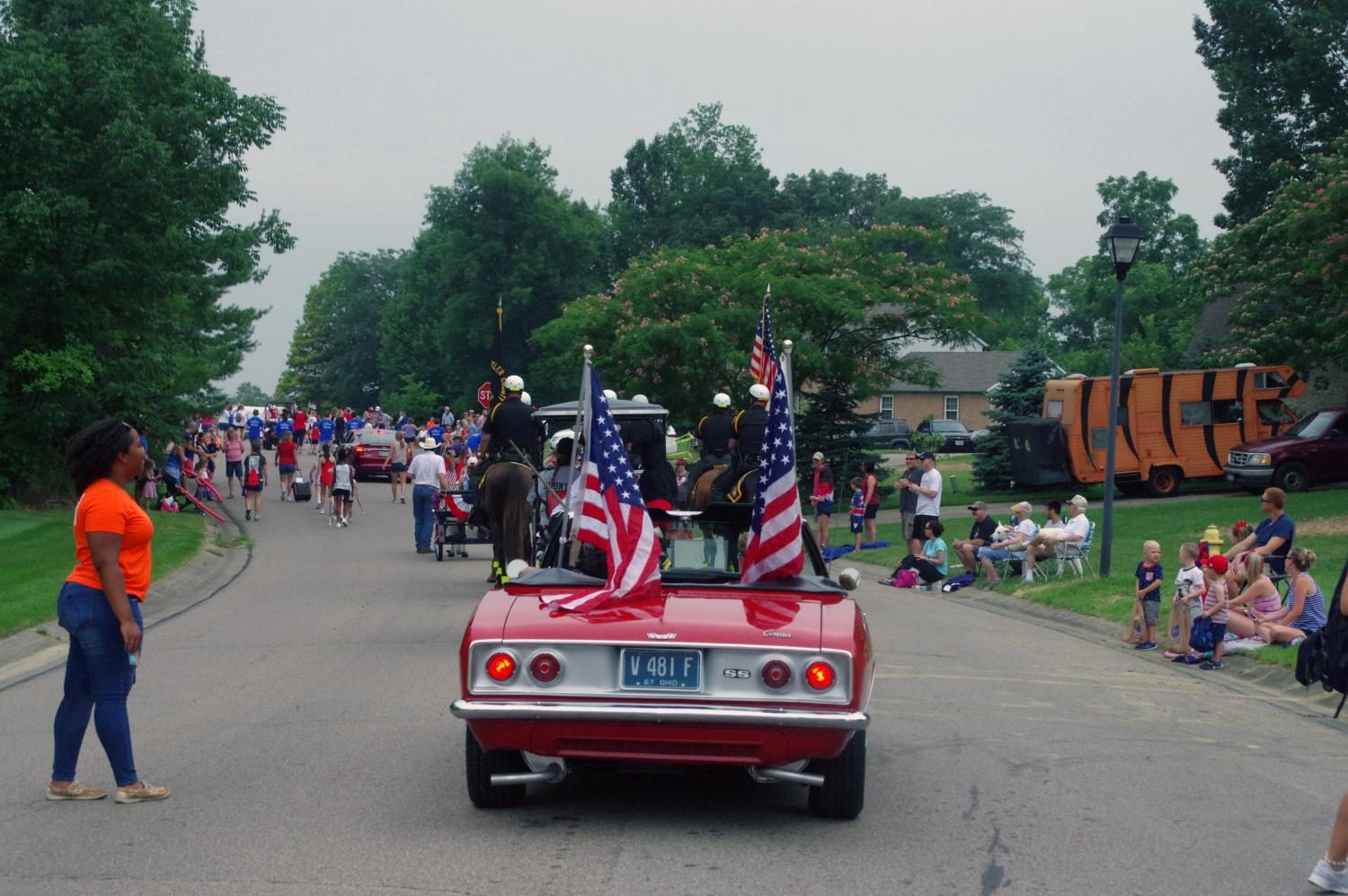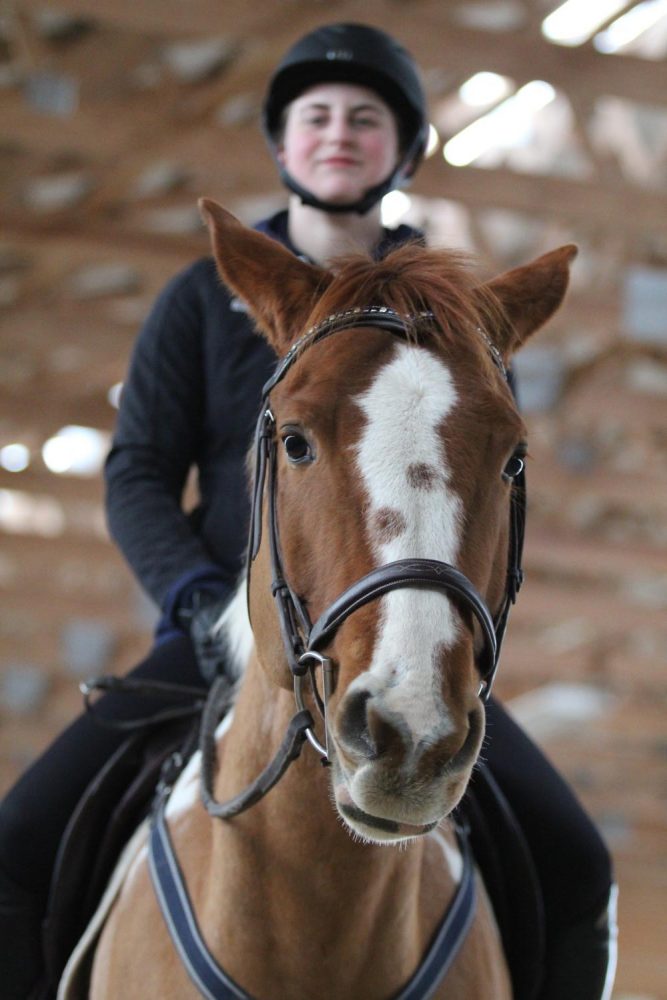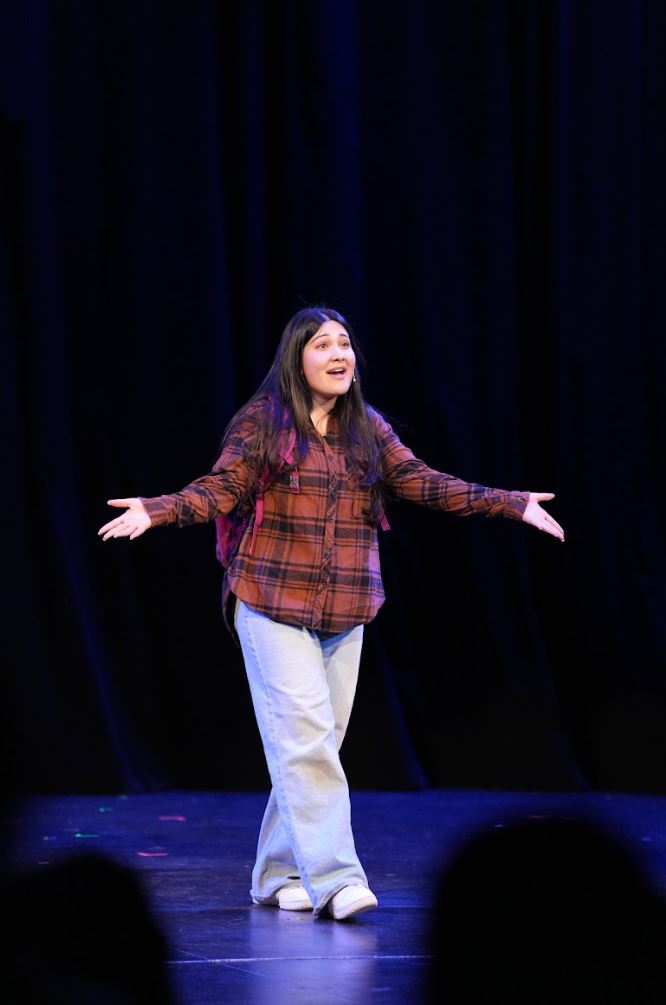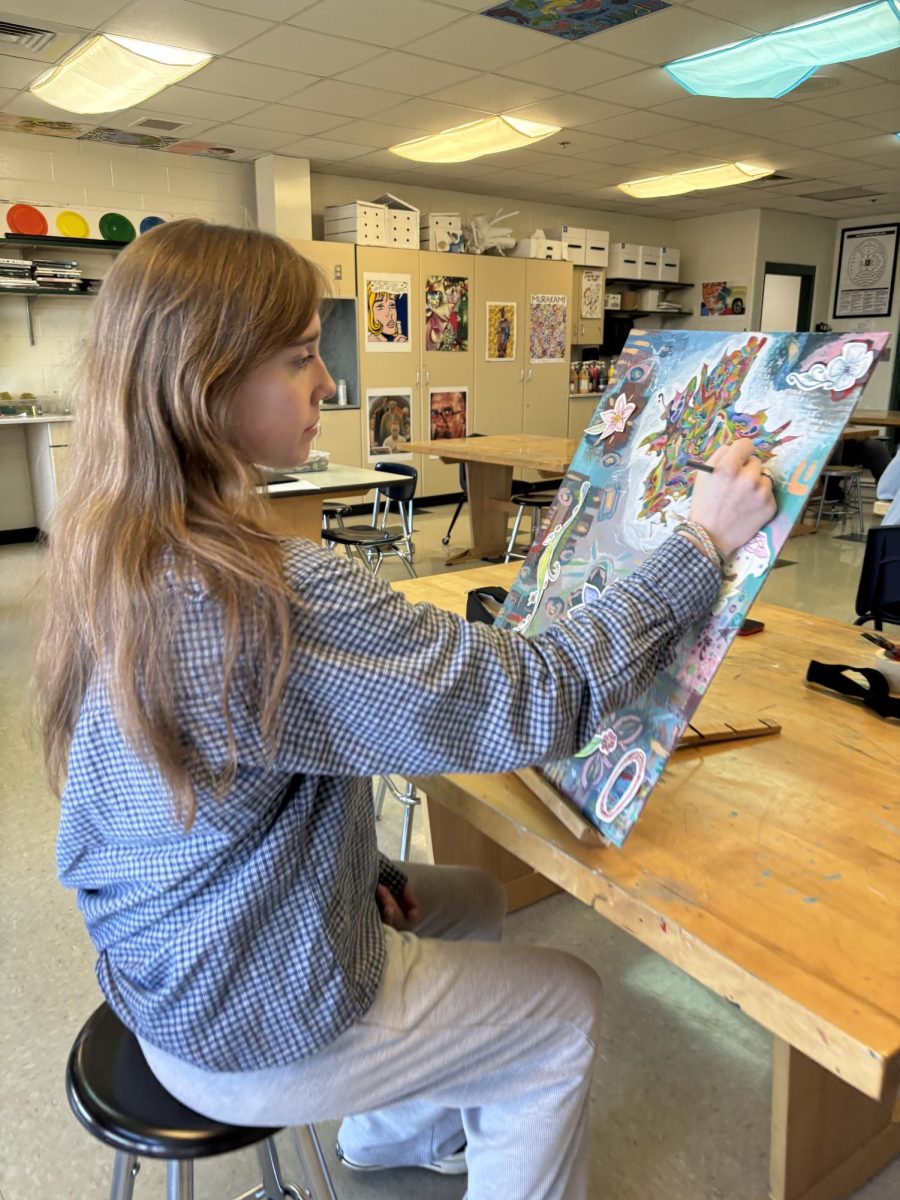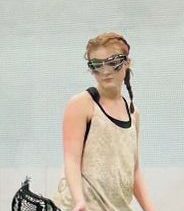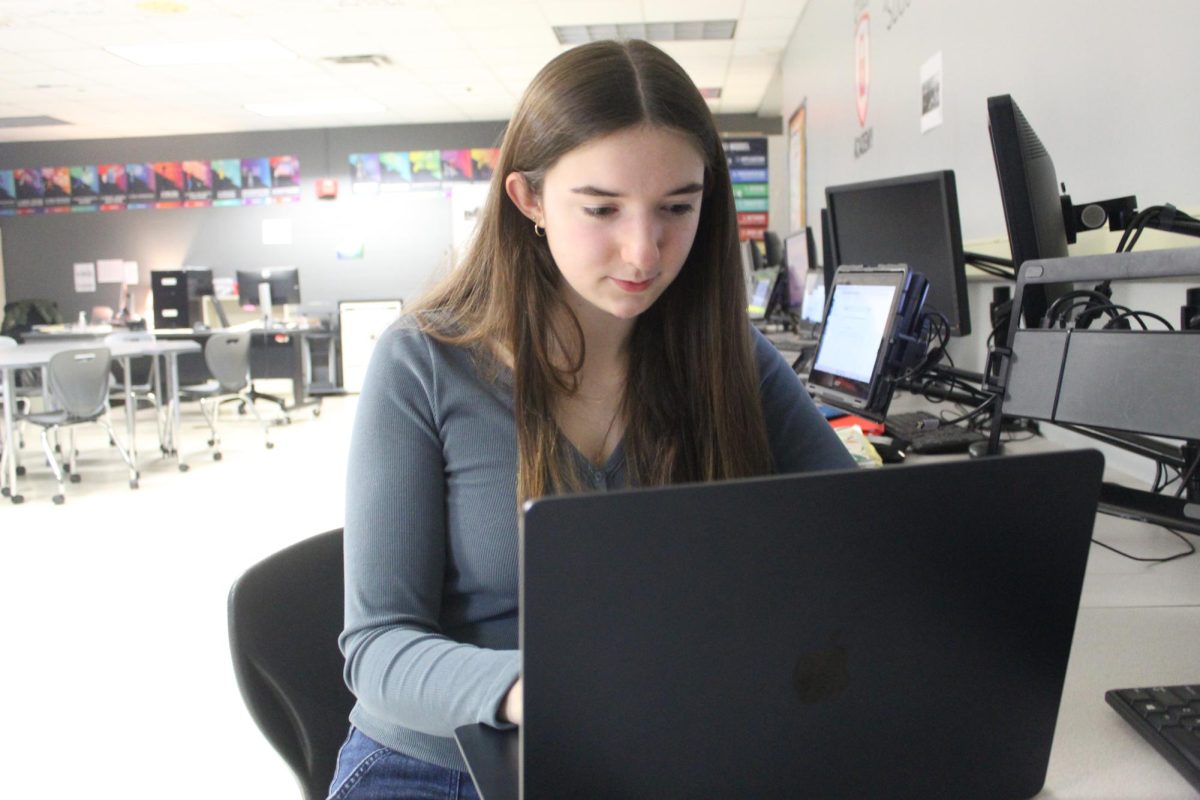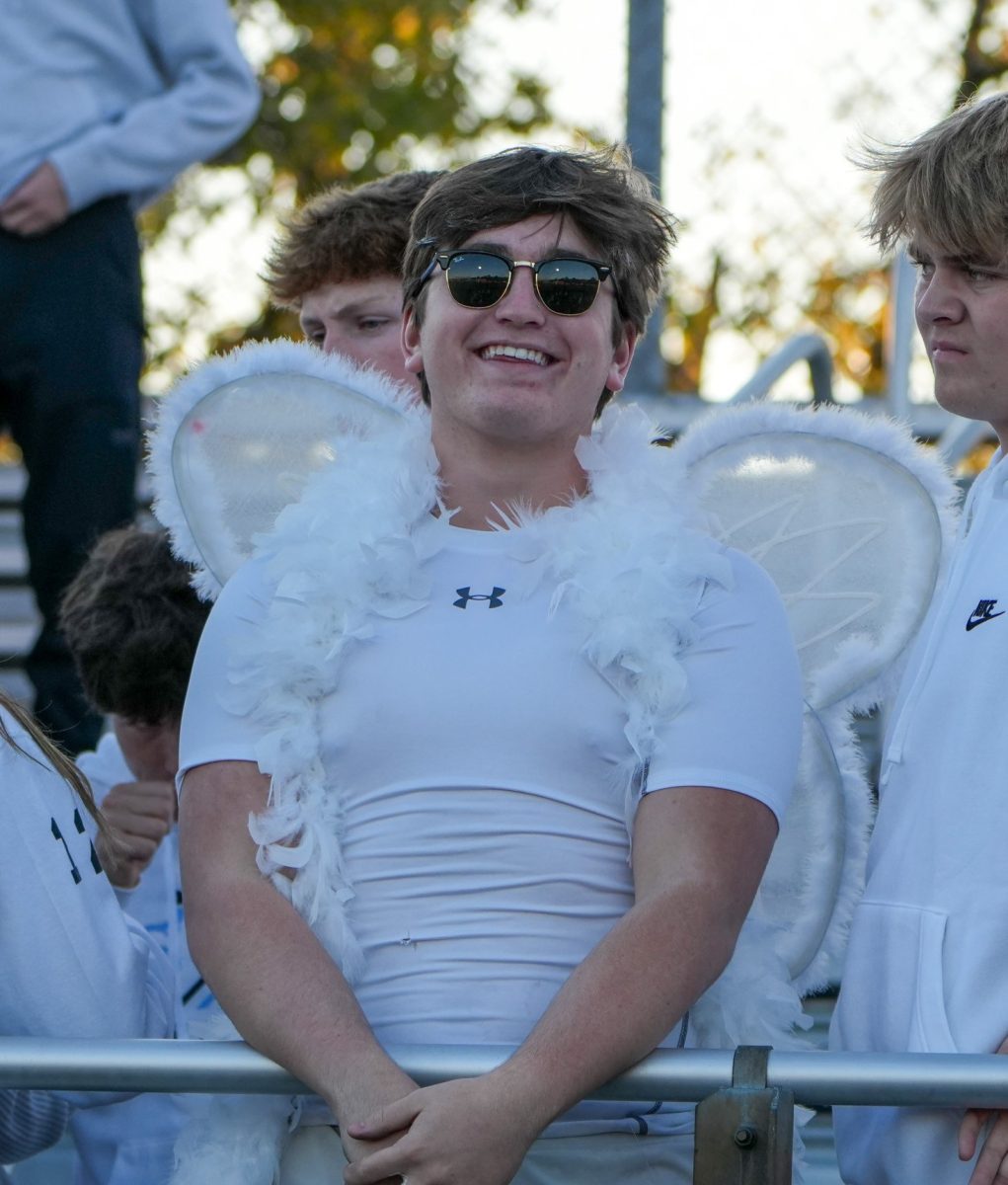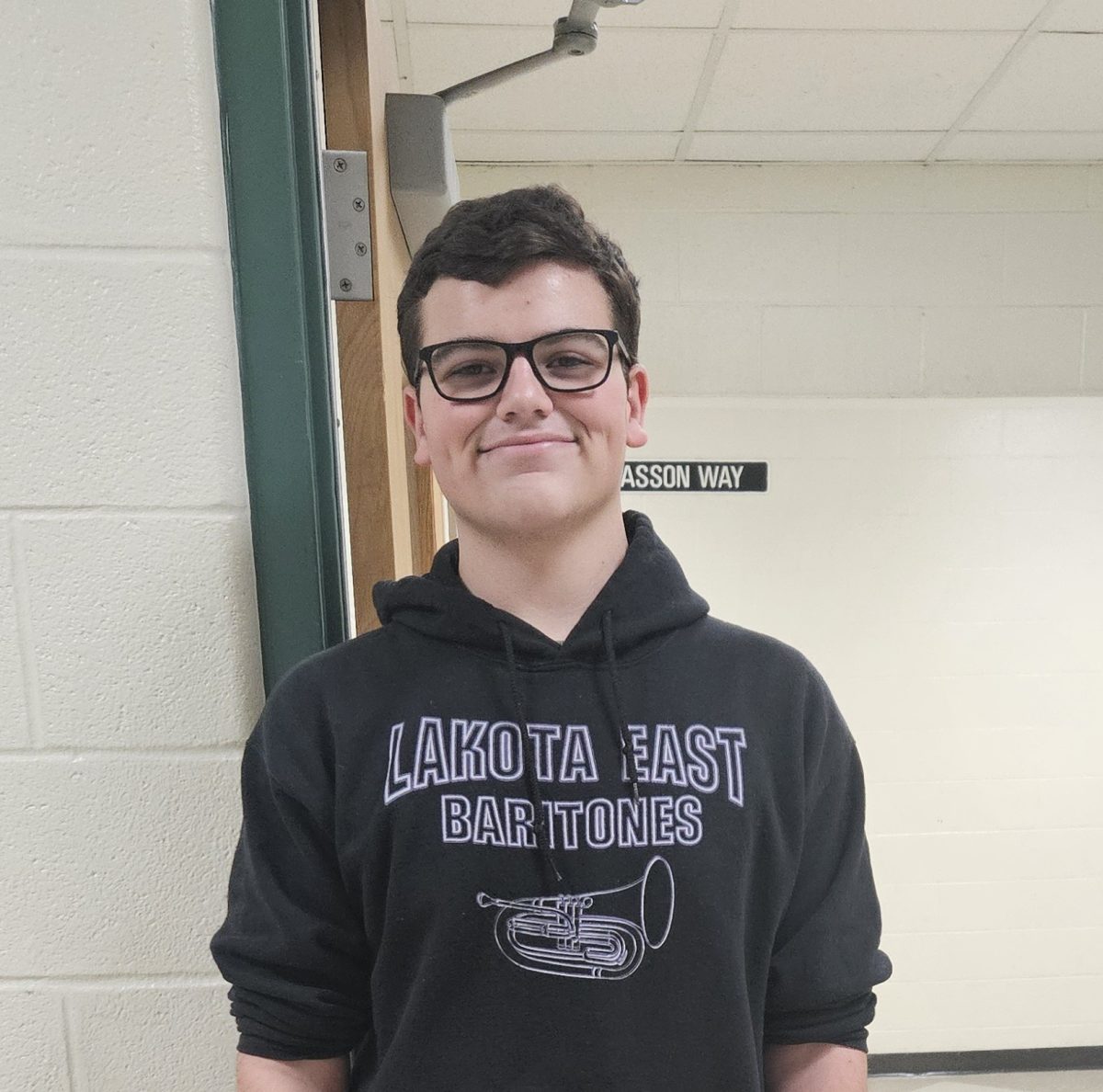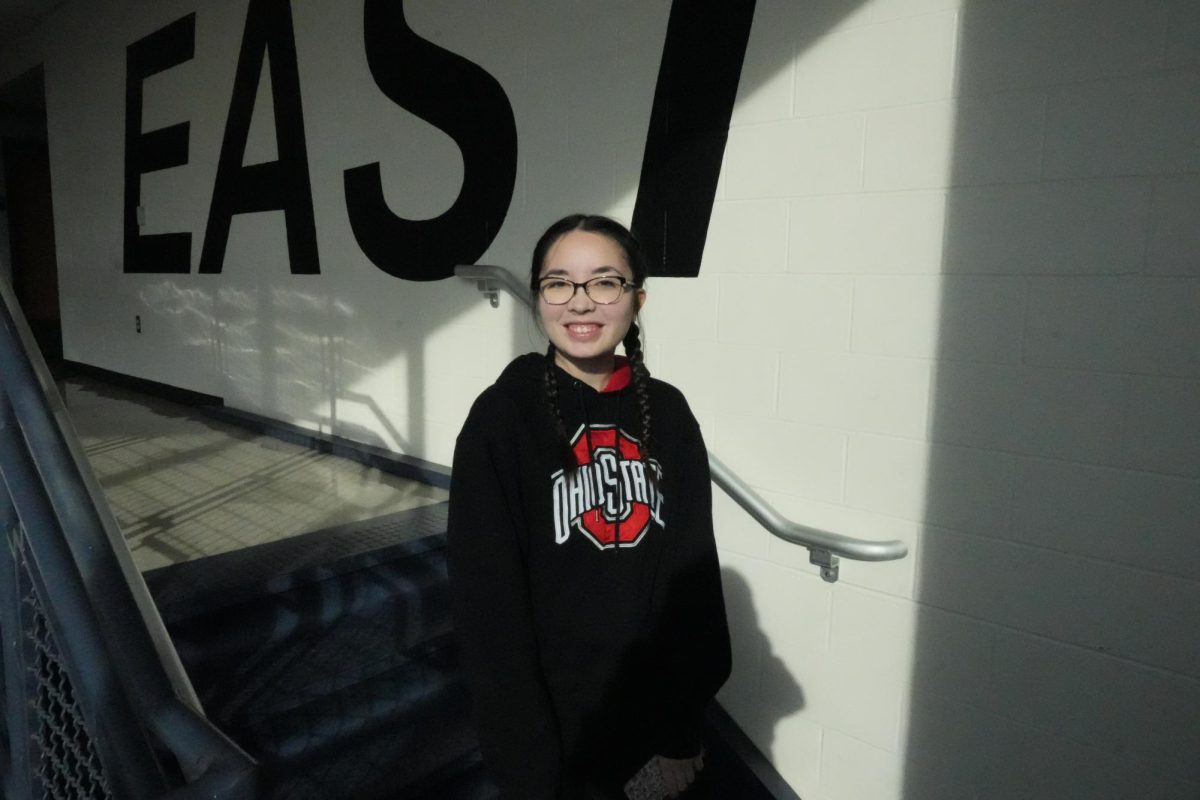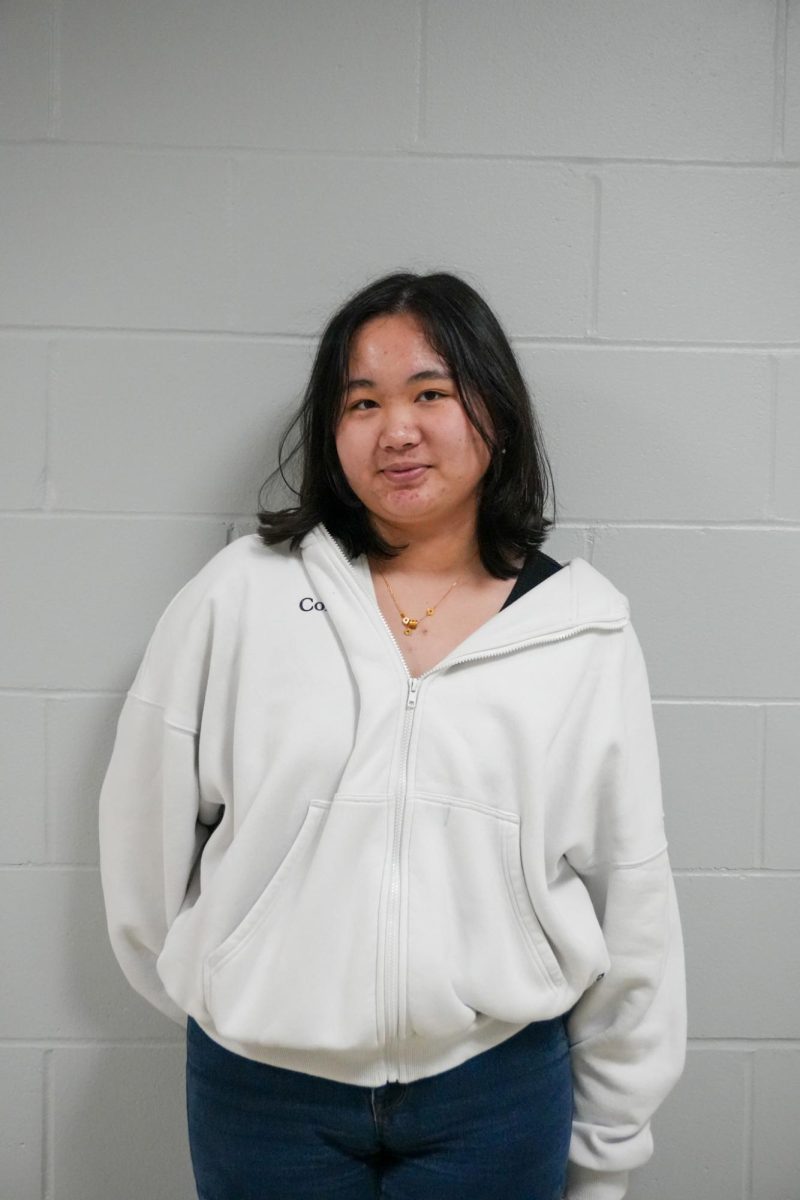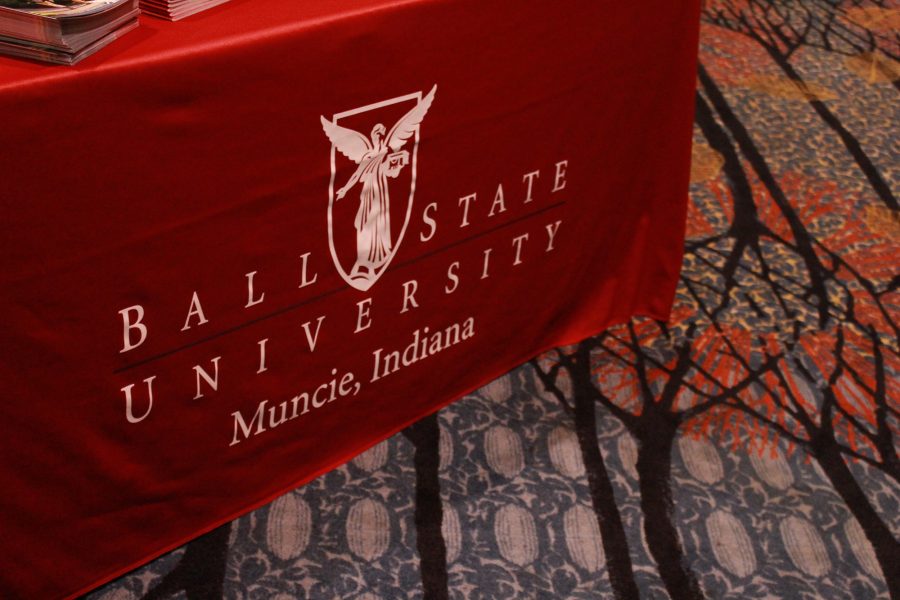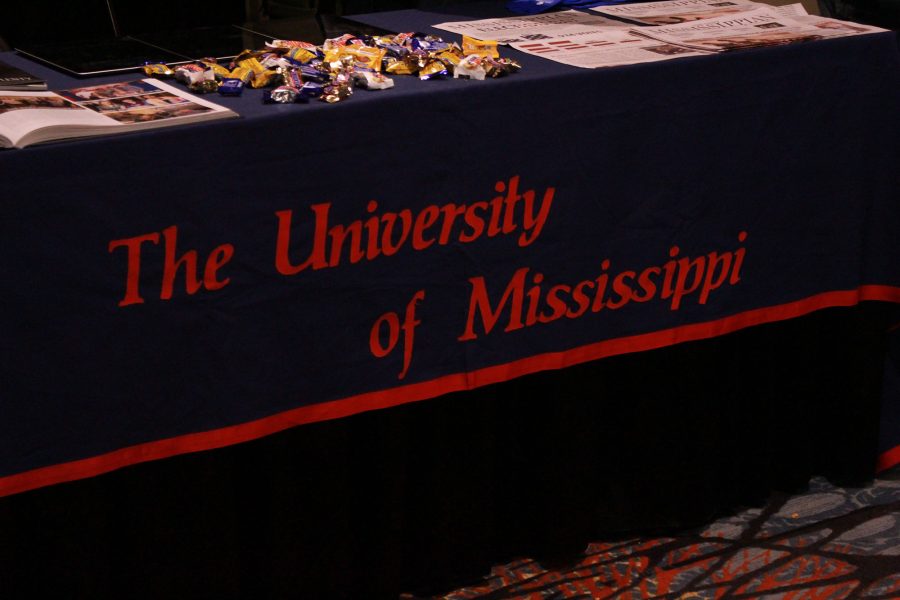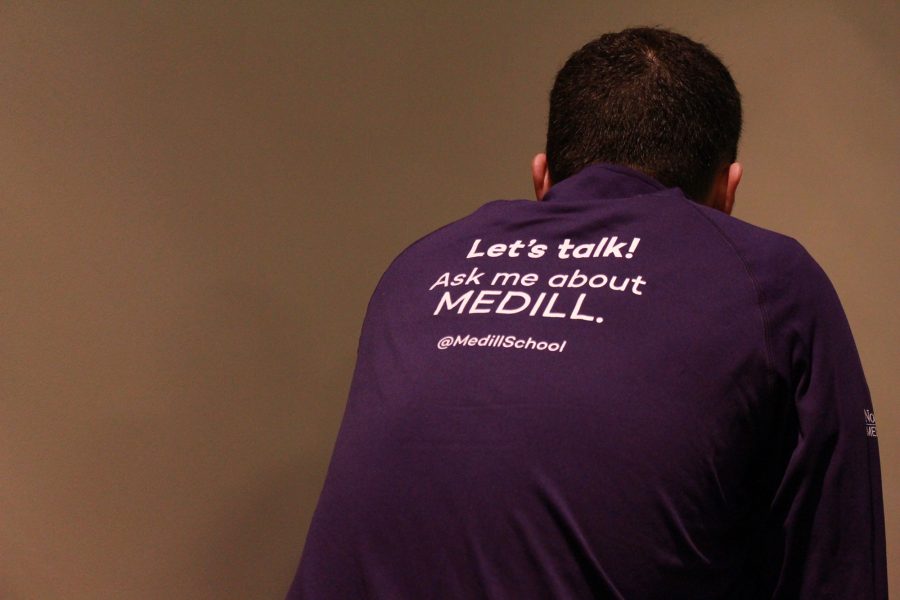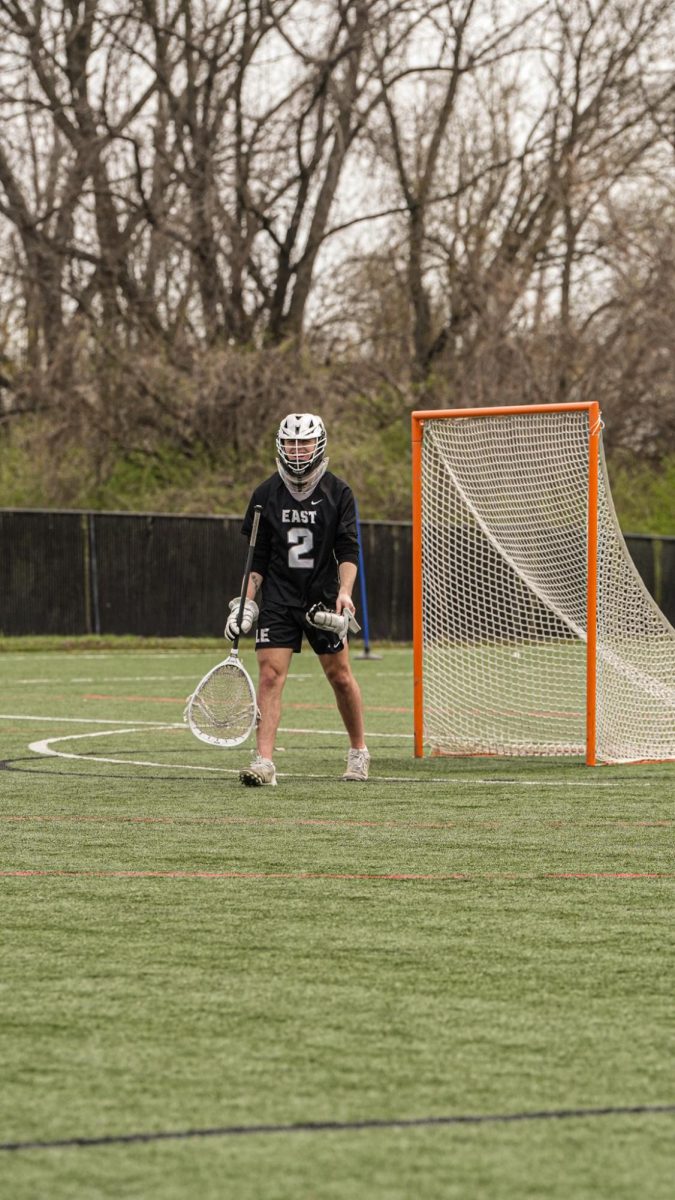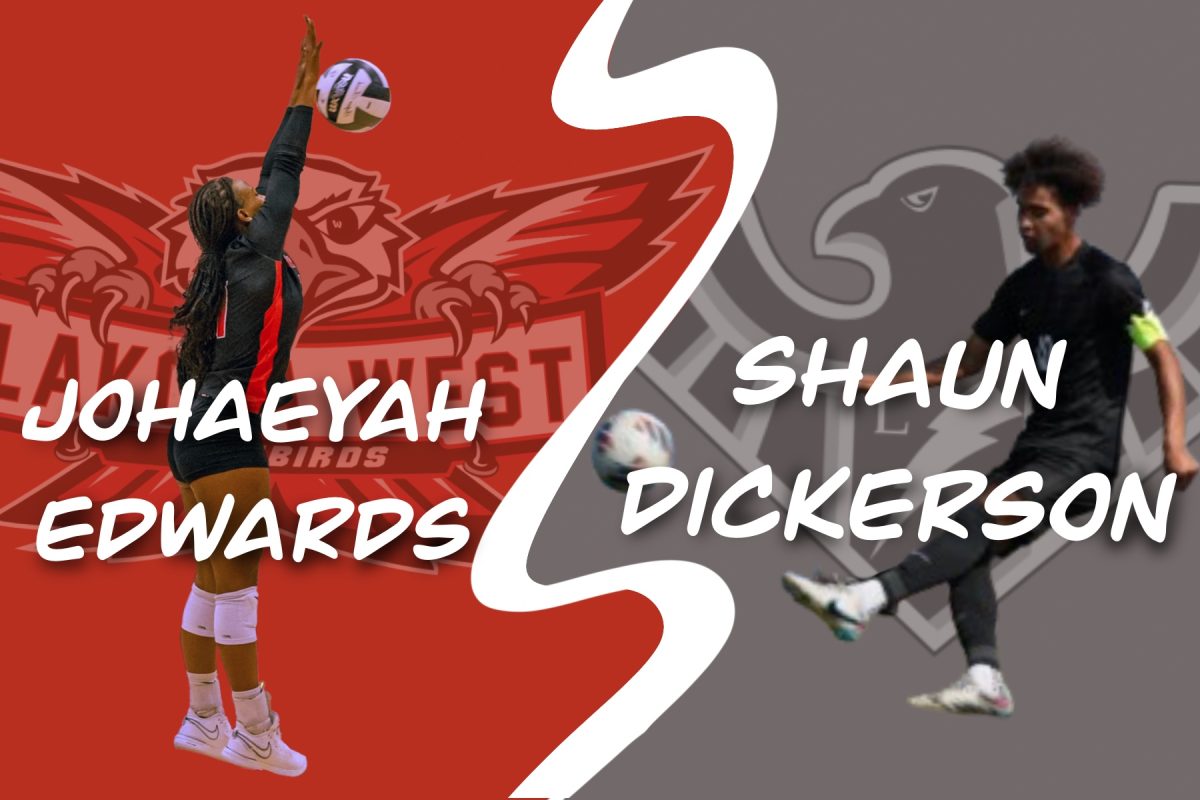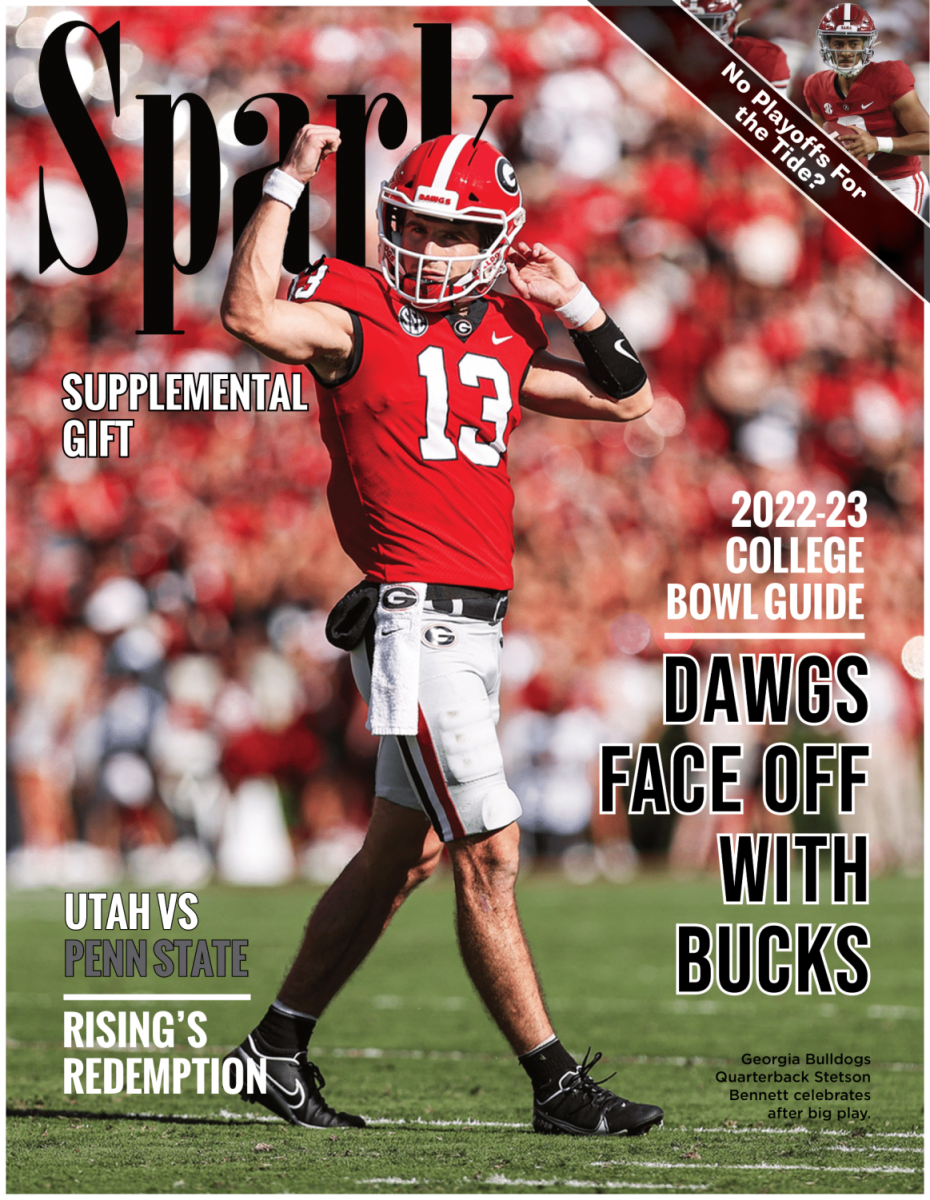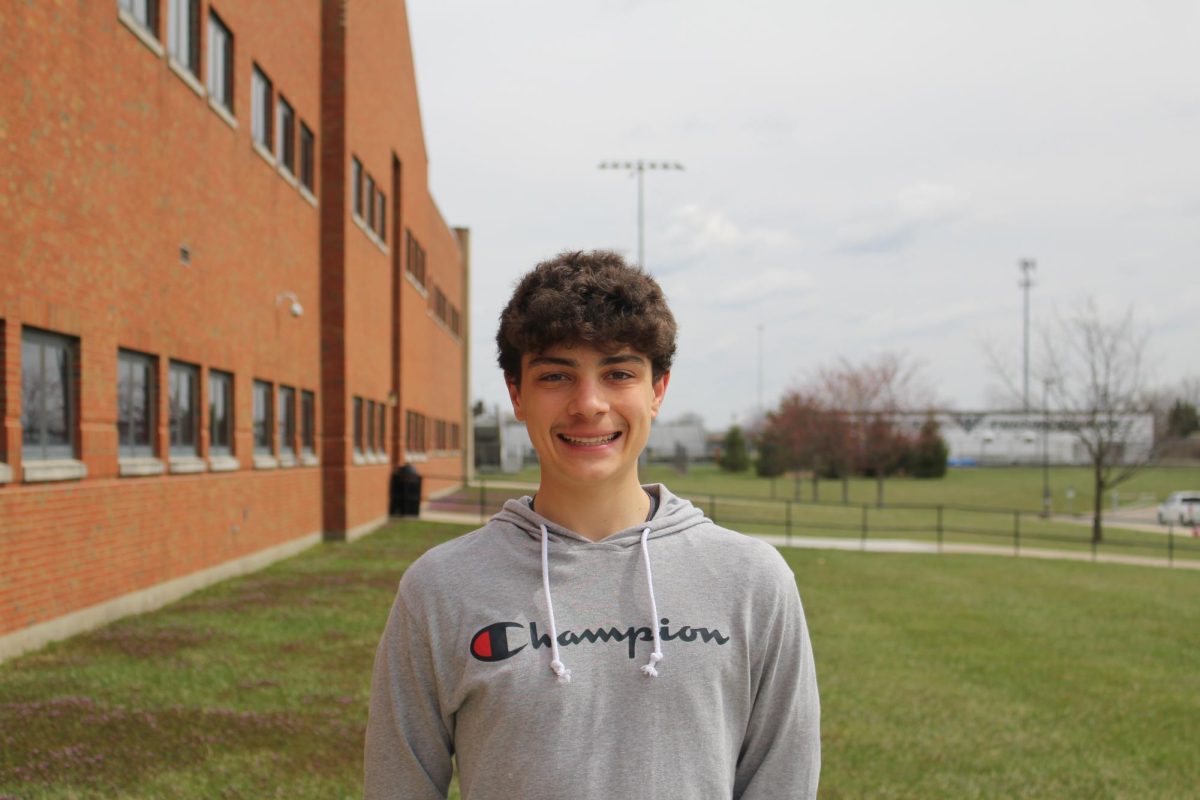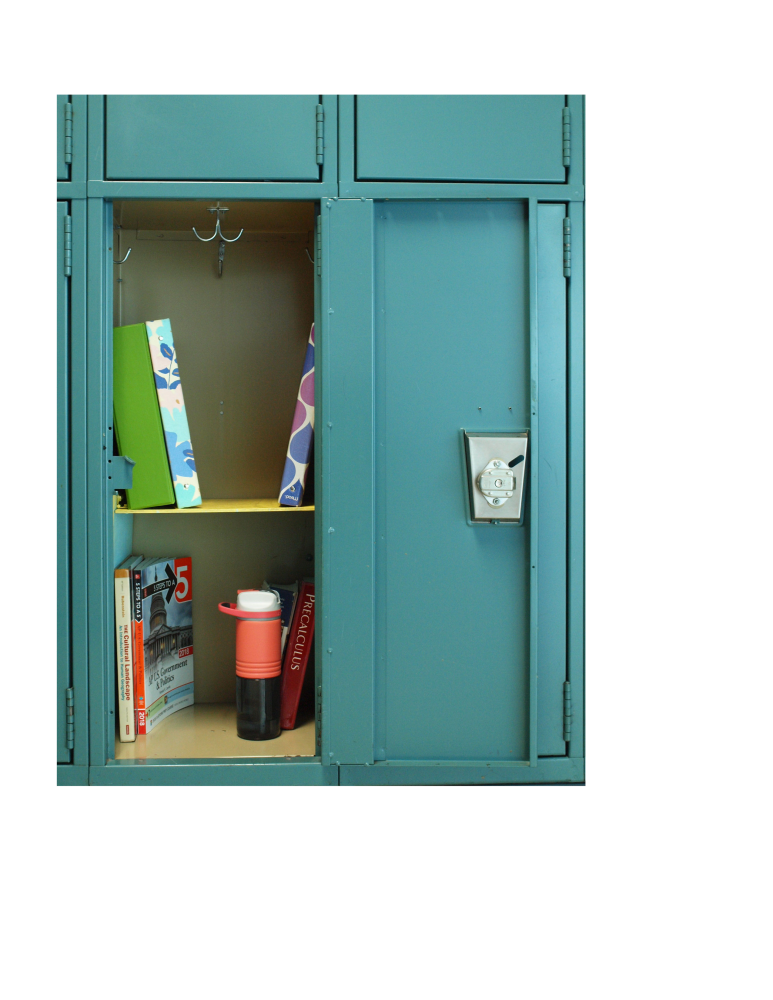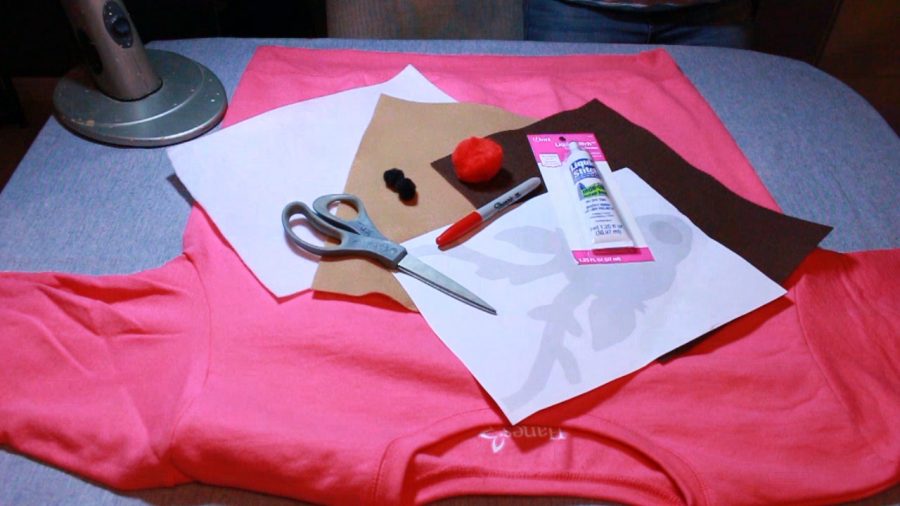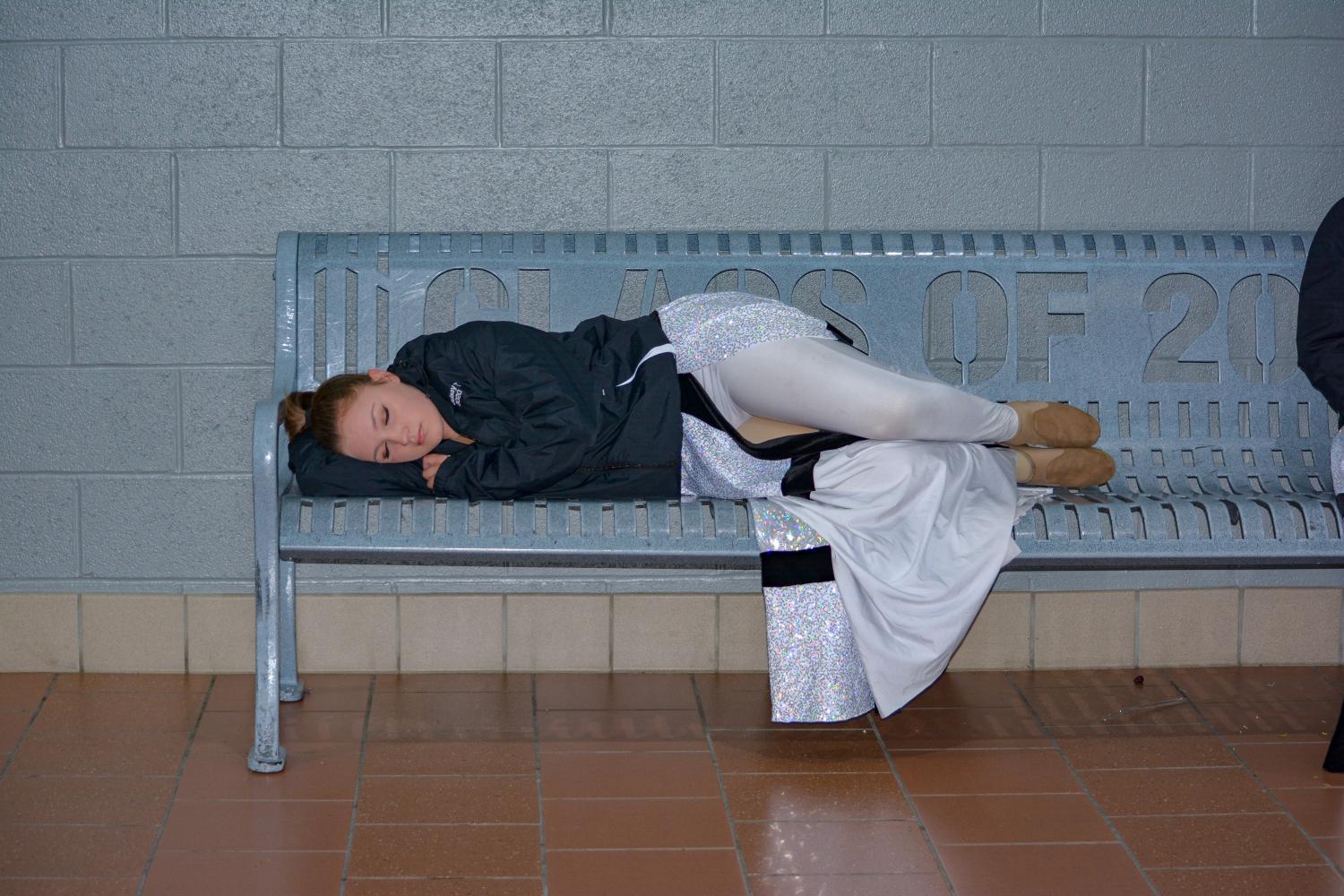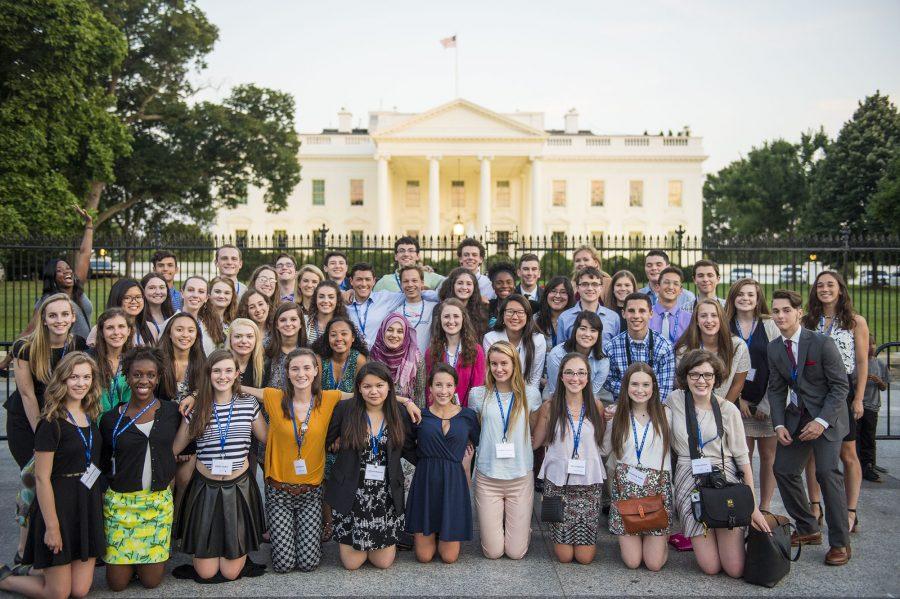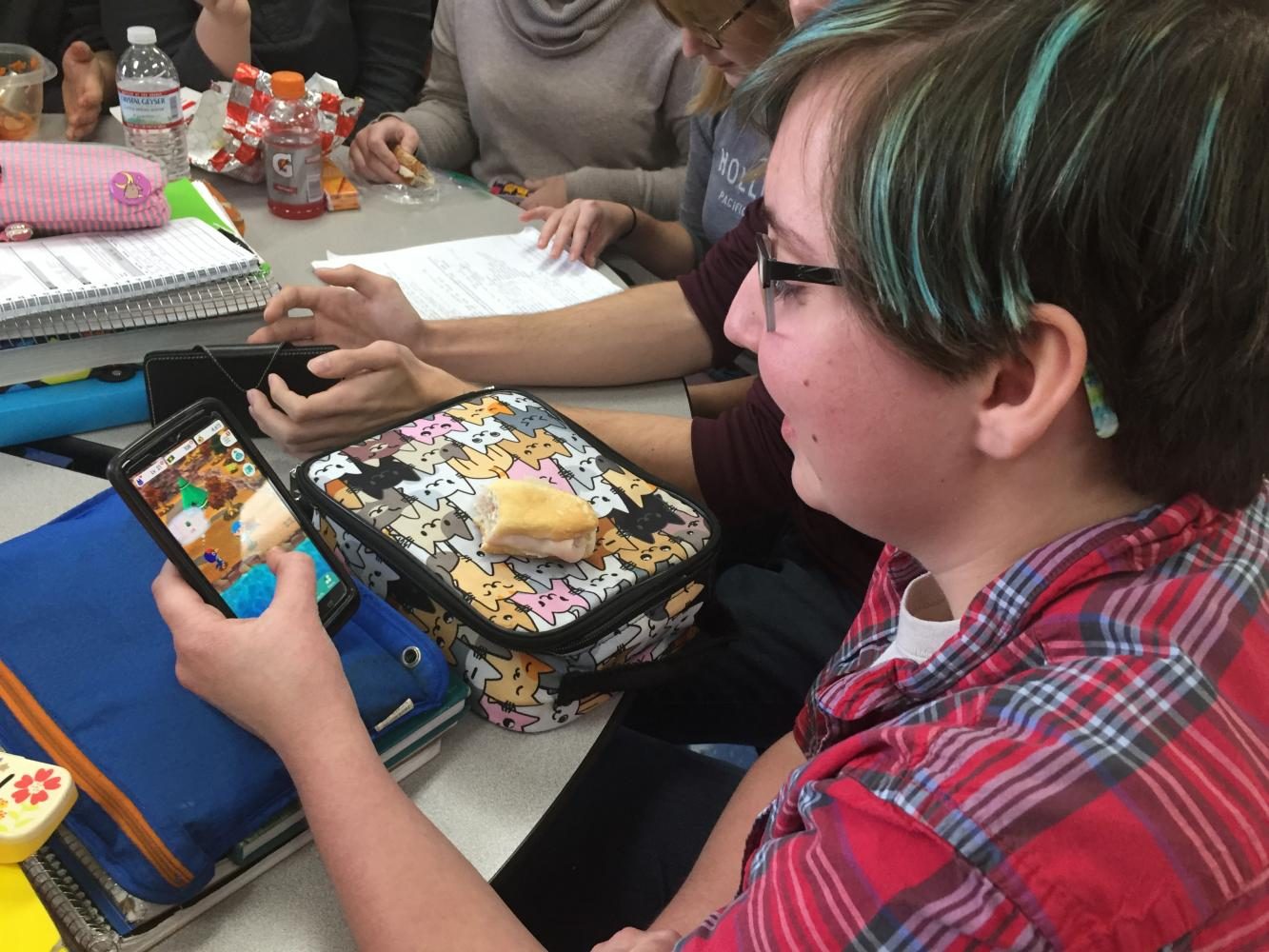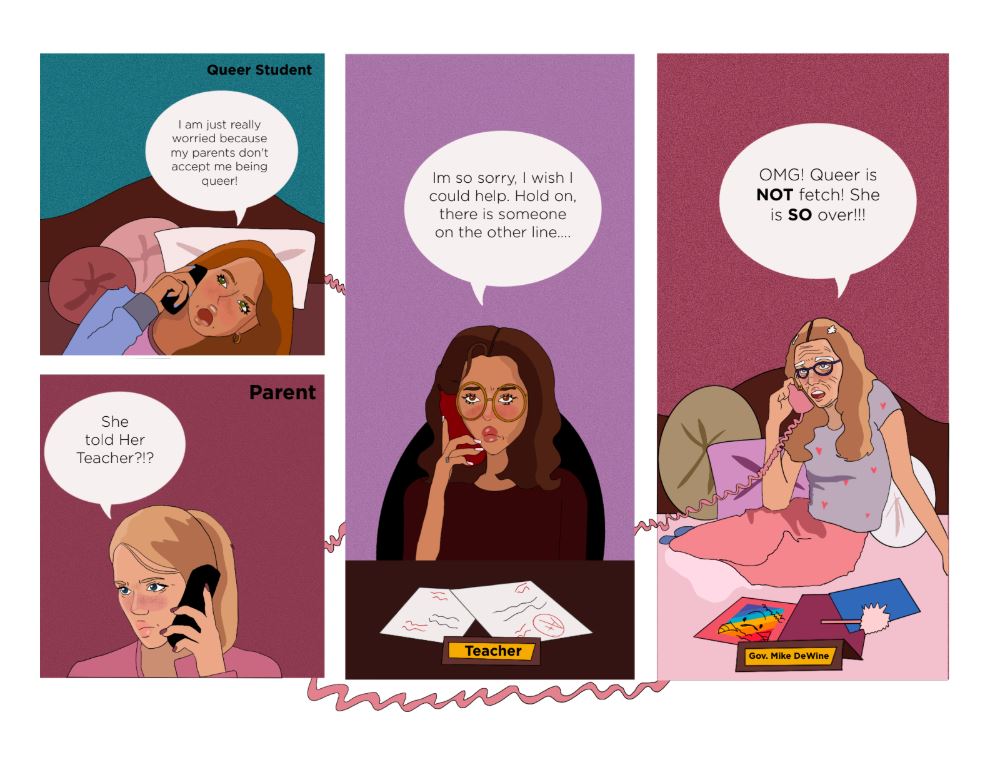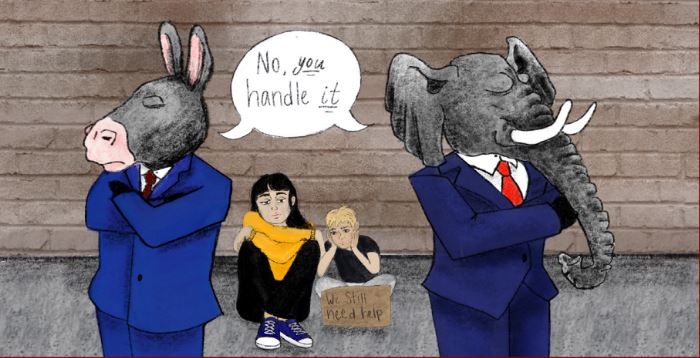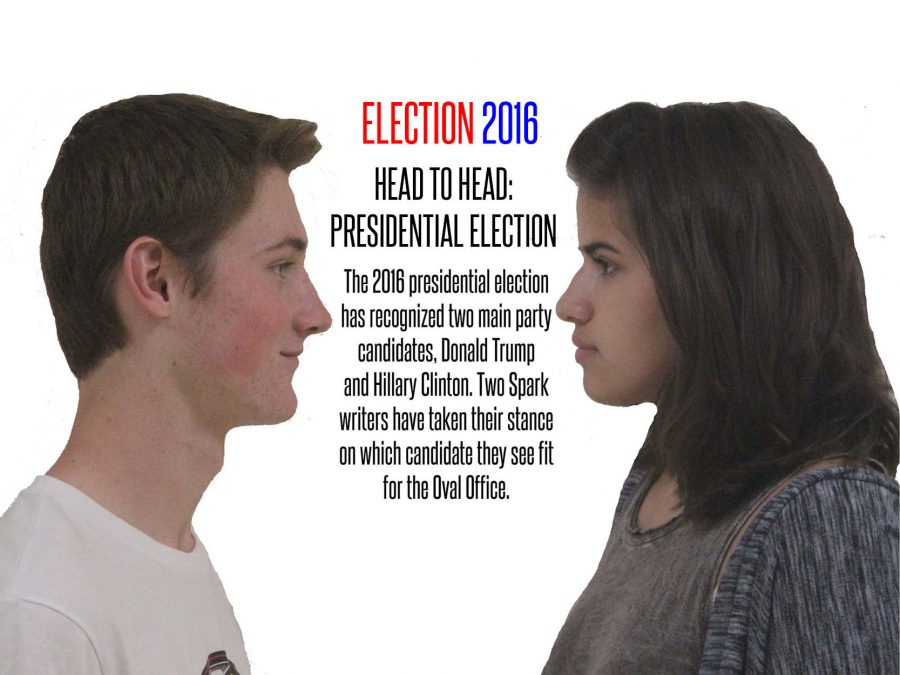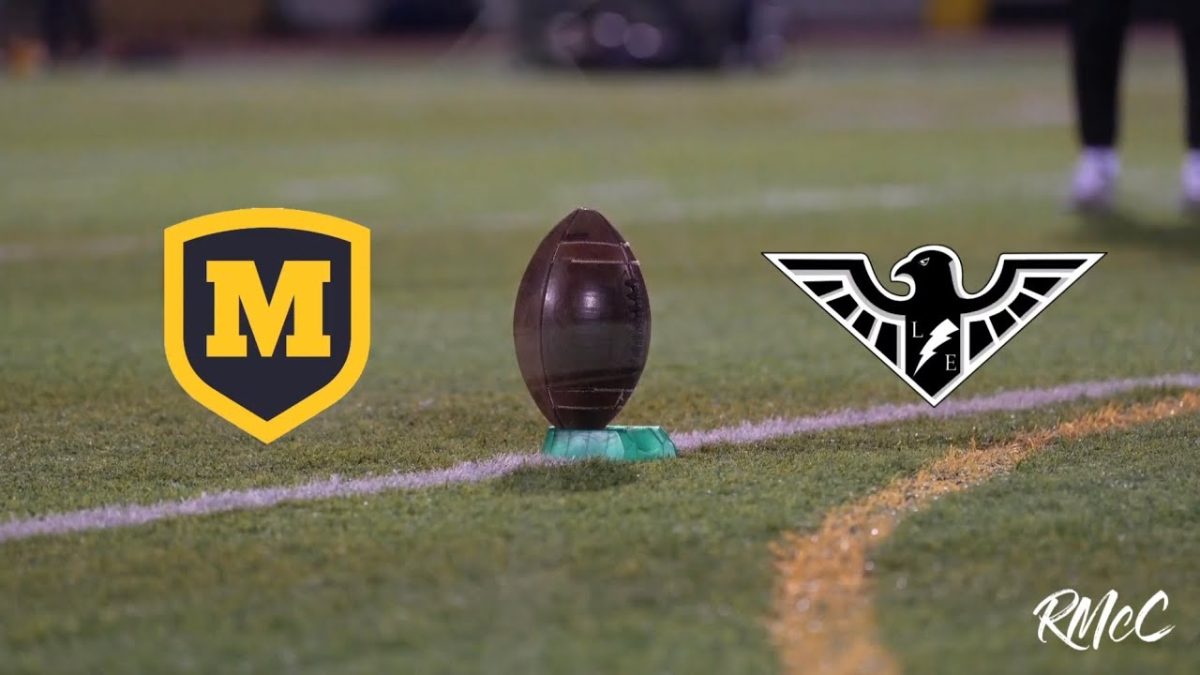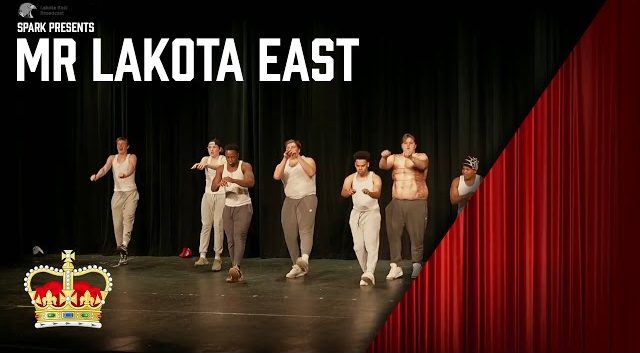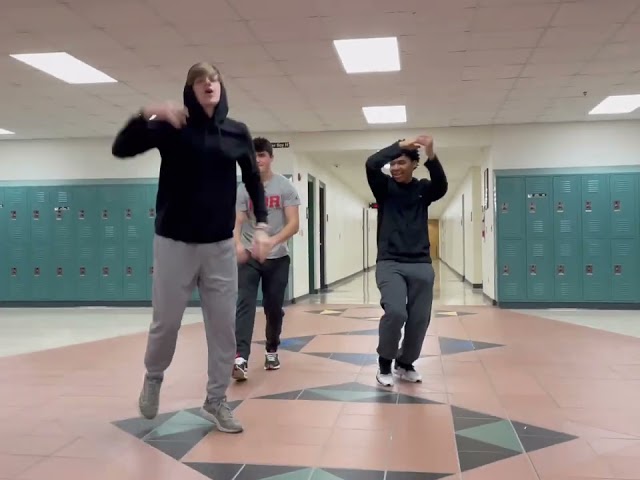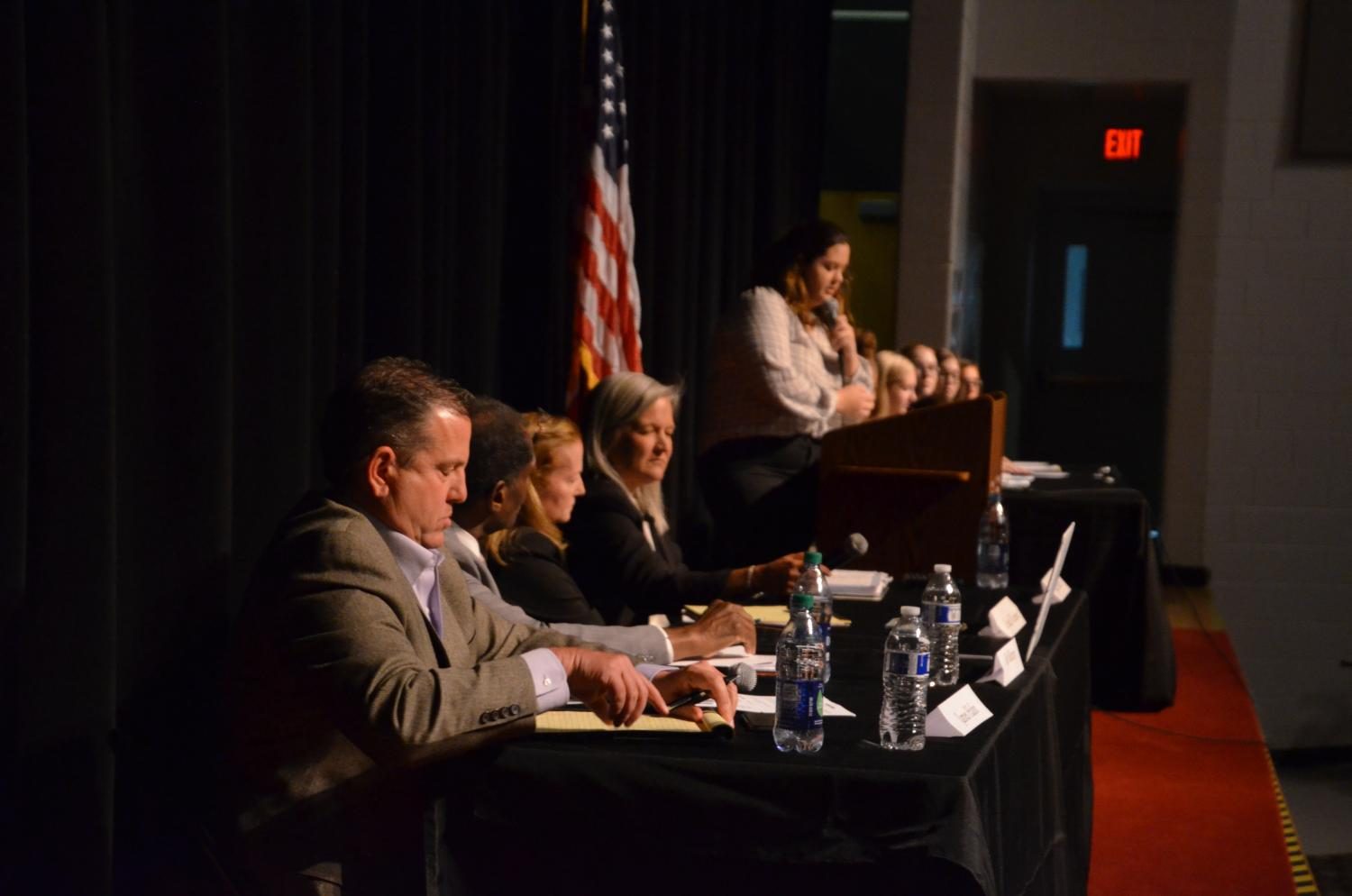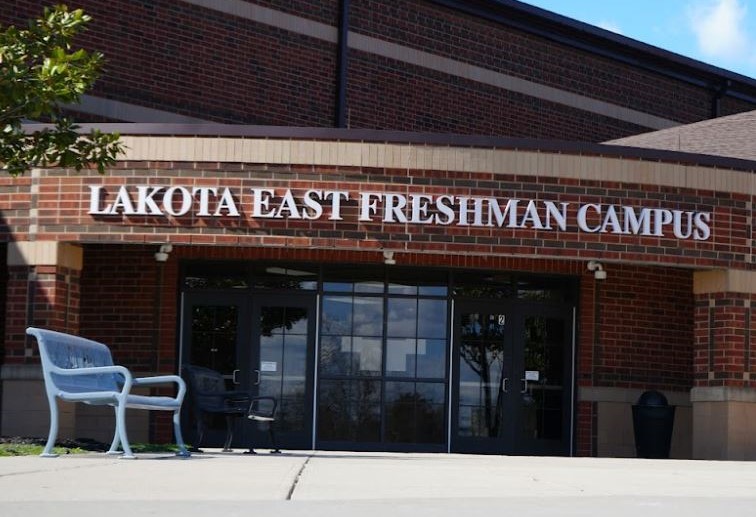story by anna mullins | photography by riley higgins and andrew marshall
On a rainy night in late October, they gathered. Community members, parents, students, and administrators all came together in the auditorium of the Lakota East Freshman Campus. There was no kicking, no screaming, and no fighting, it was just four people – willing to work for very little money to represent the district – discussing their views on the issues facing Lakota. The public came ready to learn about the four candidates for the upcoming school board election. The candidate night, hosted by the Lakota East Spark, was an opportunity for community members to inform themselves on issues facing the district and candidates’ stances on issues as elections approach. This fall, there are four candidates, two of whom are incumbents, vying for the two open four-year terms on the Lakota Local Schools Board of Education.
Each candidate was given one minute for opening statements, followed by questions posed by members of the Spark editorial board. The questions asked all pertained to issues facing the 17,000 student district. Each candidate was then given two minutes to answer. Questions were given in a rotating order to ensure fairness.
“I would say that [the top issues facing Lakota] are [that] we have some big decisions coming up in terms of facilities, making sure that we are still innovating and making Lakota a destination district, and to support the initiatives that our students are or have been involved with,” Lakota Superintendent Matt Miller told Spark.
School Report Card
Lakota, which received a “B” overall per the 2019 State Report Card, received a “D” in the ‘Prepared for Success ‘category for the second year in a row, worse than the grade of “C” given in the 2016-2017 school year. In light of this, candidates were asked how they would work to ensure this grade is improved in future years.
Candidate Ray Murray, who has previously served two school board terms and missed reelection in 2017 by 226 votes out of 37,782, took the stance that the “prepared for success” portion of the report card is based on the amount of Advanced Placement (AP) and College CreditPlus (CCP) courses offered by a school. According to Murray, Lakota does not have enough trained teachers (which requires having a master’s degree in the area of study and 18 credit hours) to fulfill the demand for such classes, so students are sent to local colleges, such as Miami University. He suggested training more Lakota teachers so additional CCP classes could be taught at Lakota to raise the report card grade.
While Murray suggested that the report card was not the best way to measure how students are doing in the district, Incumbent Lynda O’Connor, who has served 3 terms on the school board, suggested that changes should be made to the report card to make it a more appropriate measurement tool. She addressed the issue that students who do not take the ACT automatically score as a zero, negatively affecting the report card score. According to O’Connor, she has had conversations with Ohio Representative Mike Duffey, a Republican representative for District 21 who proposed a new grade card system that will allow parents to compare report card data from several different schools.
“As a stakeholder, we have to have an accountability measure, we have to be transparent with what we’re achieving, and we have to have measurable results. For the time being the State Report Card is what we have,” O’Connor said. “I think we have improvements to do on the state report card. It’s not where it needs to be.”
Incumbent Board President Julie Shaffer, who has served two terms on the board, emphasized that the board is not focused on preparing kids to take a test but rather to expand and focus on the 4E’s of “enlistment,” “enrollment,” “employment,” and “entrepreneurship.” She suggested encouraging more kids to earn an honors diploma or enroll in classes like the Cyber Academy, which currently has 152 students (see story on page 16), in order to earn industry credentials as another tactic to improve the district’s grade.
Newcomer and local business owner James Hahn spoke of bringing the requirements and measurements of the report card to a local level. Hahn also endorsed the idea that Lakota embrace Butler Tech students who learn a trade to prepare themselves for the workforce.
“There are flaws in the system at the state level, and we need to bring the testing back to the local level,” Hahn said. “By doing so we will know where our weaknesses are, and be able to turn those weaknesses into strengths.”
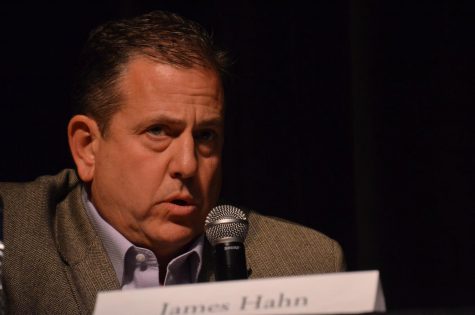
Spending Deficit
The 2019 district financial forecast, prepared by Treasurer Jenni Logan, predicts that Lakota will hit a spending deficit by 2023. Candidates were asked what they would do to improve Lakota’s financial situation.
O’Connor mentioned that for the past six years Lakota has had no deficit, making it one of the 14 or 15 districts across the state of Ohio that managed to achieve no red in the five-year forecast. According to O’Connor, she voted “No” on the October 2019 five year forecast because it predicted deficit spending. She suggested that the board look at the budget on a long term basis and at each piece as part of a whole. For instance, she said that more School Resource Officers (SROs) can’t be hired without understanding how it will impact the rest of the budget, since one labor contract will impact all of the other contracts.
While Shaffer echoed that the district must be fiscally responsible, she also pointed out that protocols have been put in place that set aside 15 percent of the district’s revenues towards a rainy day fund, more aggressive than the state policy that only requires the district to keep a fund of 8.5 percent.
“It’s important for all of us on the board to be very fiscally responsible and that’s why we actually were spending less in 2018 than we did back in 2010. We’re continually looking to plan,” said Shaffer. “But at some point, we need to make sure that we invest in our students and give them the opportunities that they need.”
Hahn said that while Lakota can’t spend money on “the flavor of the day,” he is not worried about the five-year forecast. In his opinion it needs to be continually monitored.
“[Lakota is] a 190 million dollar company that includes over 1000 employees, 24 facilities and 17,000 students,” Hahn said. “When you talk about a deficit in a five-year forecast, that gives me a little reason to be uneasy.”
In Murray’s opinion the five-year forecast should not be taken too seriously because it is “notoriously conservative” and does not take into account any projected growth. According to Murray, the cash surplus currently on hand would allow the board to spend in a deficit for 38 years.
“What are we missing when we’ve got that kind of money in the bank?” Murray said. “What kids are not getting the opportunities that they deserve?”
Population Growth
According to the U.S. Census Bureau, West Chester’s population grew 53.5 percent from 1990 to 2010, and Liberty Township is predicted to grow about 24 percent by 2020 from 2010. Prospective board members were asked how they would plan to accommodate the growing population, with much of the increase due in Liberty Township.
Demographic studies were performed in 2013 and 2019, each with a different outcome for expected growth for the year 2023. In light of this, Shaffer emphasized the importance of preparation for any changes that could happen in the student population and the need to ensure that each of Lakota’s facilities is used to its fullest potential.
“[Facility studies] are our greatest asset,” Shaffer said. “We need to look at how we can best use our facilities, and we also want to make sure we plan for the additional students that are projected to come in in our latest demographic study.”
In the case of a decline in the number of students in the district, Hahn said it would be a great time to reduce ‘liabilities,’ by selling off some of the assets within the district. Hahn also emphasized the importance of stability for students and teachers.
“One of the most important things is we can not and will not [do is] allow class sizes to grow,” Hahn said. “I mean we have to maintain. We’re peaking right now in our class sizes and we cannot allow those class sizes to get any larger.”
Murray suggested that instead of looking directly at the number of students who could be entering the district, Lakota should consider their background. According to Murray, Lakota has one of the highest non-English speaking population per capita in the state.
“We have to look behind the numbers to see the kids, and how we’re going to educate those kids,” said Murray, who wanted to ensure students moving from gentrified Cinicinnati to the district are able to receive the same level of attention as current students.
O’Connor believed the demographic study predicted a plateauing growth rate, although she agreed with Murray that even with a flat demographic there is growing diversity across Lakota. These students, she felt, all have a different set of needs when they come into the classroom.
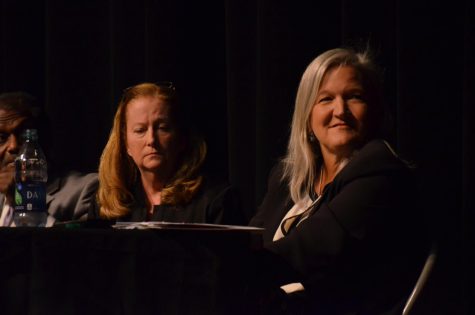
Transgender Policy
A proposal for a transgender policy was presented to the Board two years ago by then member Murray, but it was rejected 3-2 by the board (O’Connor, Todd Parnell, and Ben Dibble voted to reject; Shaffer and Murray voted to adopt). The policy, which was based off of the policy used by Bexley City Schools, would have extended the hazing and bullying protocol already in place to transgender and gender nonconforming students along with other protections such as record privacy, facility use, athletic participation, program particpation, pronoun adherance, etc. Candidates were asked how they would vote should the policy be brought up again.
Hahn, who was not on the board when the policy was proposed, felt that the policy was rushed and that it wasn’t fiscally responsible.
“If the policy was presented to the board, and I sit on that board, I would absolutely again vote ‘No’,” Hahn said. “Now, if there was a policy that came out that involved the parents, the administration and the teachers, that specific child, and how to handle that situation on a one on one basis. I’m absolutely for it, because there’s no place in our district for bullying.”
Murray admits that he originally made a mistake by not talking to the teachers who were already taking care of their students.
“In three years, I made two trips to Children’s Hospital, to talk to the kids in the transgender unit. They told me their fears; they told me their visions for the future,” Murray said. “Those kids are dear to my heart, and I will be there. Every kid should be safe in this district.”
O’Connor said that the legal counsel for the school board advised them not to put a policy in place. She also said that she opposed the policy due to the renovations it would require. Instead the board included sexual and gender identity as a part of Lakota’s hazing and bullying policies.
Shaffer admitted that she originally did not know much about the issues facing transgender and LGBTQ students, but after learning more about the subject, voted yes on the 2017 policy. She said that she worked to be more educated on this issue and learned that upwards of 70 percent of transgender students may have considered suicide at some point.
“It moves you and changes what you want to do to protect our students,” Shaffer said.
Graduation Requirements
Graduation requirements over the past years have been constantly changing for each class. In the 2019-2020 school year, the current four high school classes are required to meet three different sets of standards by the Ohio Board of Education in order to graduate.
According to Murray, in the past year, Miller has worked at the state level to come up with a plan to accommodate students who don’t meet the state’s requirements and should be allowed to implement this process.
According to O’Connor, in the past the school board had a lot more control over graduation requirements. In her opinion, returning to that mindset would be beneficial.
“I think it should be up to the community and what they believe their students need to know,” O’Connor said. “With the 4E’s, [Lakota is] offering students many options that we feel are perfectly appropriate on all sides, whether it’s enrollment in college, enlisting in the military, entrepreneurship, or employment.”
Shaffer said that she is thankful Superintendent Miller and District Treasurer Logan are investing time with lawmakers in Columbus so that they can have a say in the politics surrounding graduation requirements, “because the target students are aiming for is always moving.” She believes that the state is using “old rubrics” while expecting curriculum and education to evolve and adapt to meet today’s students’ needs.
According to Hahn, the most important thing for the school board to do is advocate for legislation, so that they can have more control over the restrictions and requirements being put on Lakota students. He believes that the board has to find a way to measure graduation pathways in an effective manner that works for teachers, staff, and students.
School Safety
School safety has become a hot topic in districts all across the country. The Lakota district has invested nearly $50,000 by installing Bearacades™ for each Lakota classroom in the 2019-2020 school year. In 2014 with funding granted by the 2013 levy, the district provided all 18 district SROs a day of in-depth training, constructed new “safe and secure” entrances on 12 Lakota buildings and installed cameras, radios and buzzers.
The steps that have since been taken include installing Raptor, a visitor management system that can quickly ascertain visitors’ background information. The Raptor system works by taking a photo ID and scanning a visitor for any prior records. If there are none, a sticker will be printed for the visitor to wear for the duration of their visit. However, Hahn believes this to be insufficient.
”There’s no school that’s too safe,” Hahn said. “There’s no pat downs, there’s no additional investigation about [who visitors are] and what [they] have on [their] body. And that makes me nervous. We need to take more steps to ensure the safety of our children, and we have to look at every avenue possible.”
At a Meet the Candidates forum hosted by the Lakota District Parent Council (DPC), both Hahn and O’Connor stated that they would be in favor of arming teachers.
“I will support a concealed carry program. The alternative, the tragic loss of life, the trauma to students and to staff is unacceptable,” O’Connor at the forum. O’Connor has also attended school safety summits to see what else the district can do.
The district has also installed new cameras into buildings. Shaffer said that the cameras will give administration remote access in the case of a disaster.
As a former police officer and drug enforcement agent from the Chicago area, Murray feels that the best way to keep students safe are the SROs already in the building. He said that they are the “boots on the ground,” connecting with the students and teaching them how to stay safe.
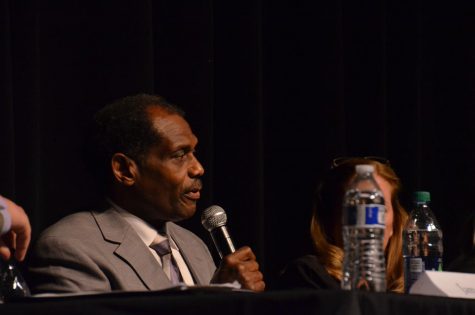
Open Question
Finally, the candidates were allowed a period to talk about the topic or policy most important to them.
Shaffer spoke on her belief that schools need to keep up with the changing educational needs of the student body.
“Schools went through a long period of time where they did not evolve very quickly,” Shaffer said. “I think schools now recognize the need to change very quickly to meet our students’ needs. For us, being able to support the work of personalized and individualized learning that’s happening right now in the curriculum department is going to be essential.”
Hahn believes that emphasis should be placed on what students are going to do once they leave high school. He says that there are gaps in what students are learning, making them less employable. His goal is to close these gaps, making students more attractive to the workforce.
“I would help drive a change in culture,” Hahn said. “We need to embrace Butler Tech, and the kids who want to learn a trade.”
According to Murray, Lakota gives students plenty of opportunities to get trade or job skills via the Butler Tech teachers in the district, but that there is a lack of social skills taught.
“We’re seeing kids that have technical skills show up at our [businesses], but they have no interpersonal skills,” Murray said. “The Ohio Board of Education is trying to put social skills on par with reading and mathematics. I think it is something that we should really embrace here.”
Lakota offers the 4E’s of “employment”, “enrollment”, “entrepreneurship”, and “enlistment”. O’Connor said that Lakota shouldn’t push as much for students to go to college but to offer the other three paths as well. She said that the conversation of student opportunities should be brought to the state level.
“Part of increasing the career tech options is changing the conversation from a federal level, to the state level, to the local level about options for students,” O’Connor said. “There’s a tremendous amount of opportunity out there, that we’re not able to help our students take advantage of until we change the conversation and say, every one of those forays works.”



